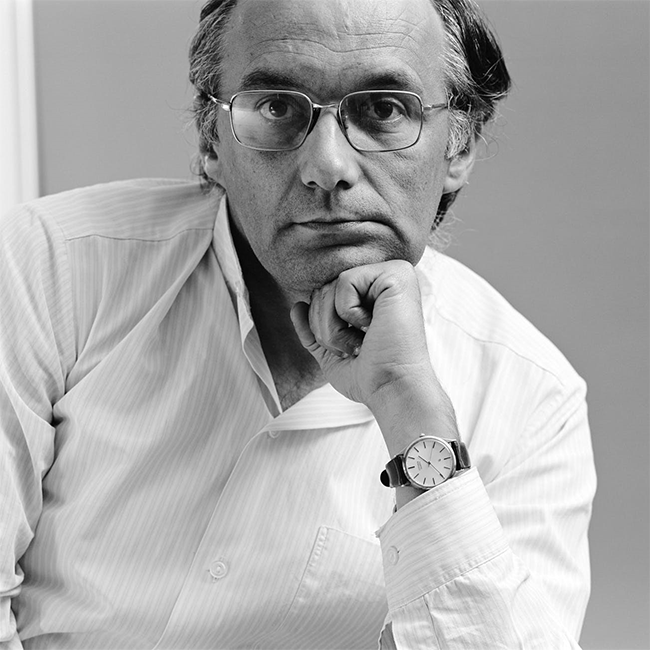Luigi Ghirri
Born on January 5, 1943, in Scandiano, Luigi Ghirri studies geometry in Modena and obtains his degree in 1962. He will work as a surveyor until 1974. From 1968, he travels in Italy and abroad (Paris, Lucerne, Bern, Amsterdam, Brittany). In 1974, he opens a graphic arts studio, before cofounding, in 1977, the publishing house Punto e virgola, that will release Kodachrome (1970 – 1978).
Inspired in part by the Conceptual art of his time, Luigi Ghirri used his camera to examine the relationship between the physical world and the world of images. His subject was the landscape around him, but his photographs are much more than visual documents of 1970s and 1980s Italy. With his uncanny eye for composition, Ghirri searched out chance arrangements in the human-built world, framing them in his camera’s viewfinder like found photomontages. He worked in color because, as he put it, “the real world is in color,” and he made modestly sized meticulous prints, rarely producing more than one or two from each image.
In 1978 he published Kodachrome, a book of his photographs that touches on many of the subjects that defined his career, including windows, billboards, murals, and other sites where, as he put it, “the world of signs merges with the physical world.”
Although he exhibited extensively in Italy during his lifetime, it is only since his untimely death (February 14, 1992) that his work has begun to be more widely appreciated. In 2010 Thomas Demand organized the acclaimed exhibition “La Carte d’Après Nature” around Ghirri’s photographs, and in 2011 and 2013 Ghirri’s work was featured in the Venice Biennale. His work has been the subject of several museum exhibitions in recent years, including at the Castello di Rivoli in Turin, the MAXXI Museum in Rome, the Instituto Moreira Salles in São Paulo and Rio de Janeiro, and the Douglas Hyde Gallery in Dublin.

Born on January 5, 1943, in Scandiano, Luigi Ghirri studies geometry in Modena and obtains his degree in 1962. He will work as a surveyor until 1974. From 1968, he travels in Italy and abroad (Paris, Lucerne, Bern, Amsterdam, Brittany). In 1974, he opens a graphic arts studio, before cofounding, in 1977, the publishing house Punto e virgola, that will release Kodachrome (1970 – 1978).
Inspired in part by the Conceptual art of his time, Luigi Ghirri used his camera to examine the relationship between the physical world and the world of images. His subject was the landscape around him, but his photographs are much more than visual documents of 1970s and 1980s Italy. With his uncanny eye for composition, Ghirri searched out chance arrangements in the human-built world, framing them in his camera’s viewfinder like found photomontages. He worked in color because, as he put it, “the real world is in color,” and he made modestly sized meticulous prints, rarely producing more than one or two from each image.
In 1978 he published Kodachrome, a book of his photographs that touches on many of the subjects that defined his career, including windows, billboards, murals, and other sites where, as he put it, “the world of signs merges with the physical world.”
Although he exhibited extensively in Italy during his lifetime, it is only since his untimely death (February 14, 1992) that his work has begun to be more widely appreciated. In 2010 Thomas Demand organized the acclaimed exhibition “La Carte d’Après Nature” around Ghirri’s photographs, and in 2011 and 2013 Ghirri’s work was featured in the Venice Biennale. His work has been the subject of several museum exhibitions in recent years, including at the Castello di Rivoli in Turin, the MAXXI Museum in Rome, the Instituto Moreira Salles in São Paulo and Rio de Janeiro, and the Douglas Hyde Gallery in Dublin.
